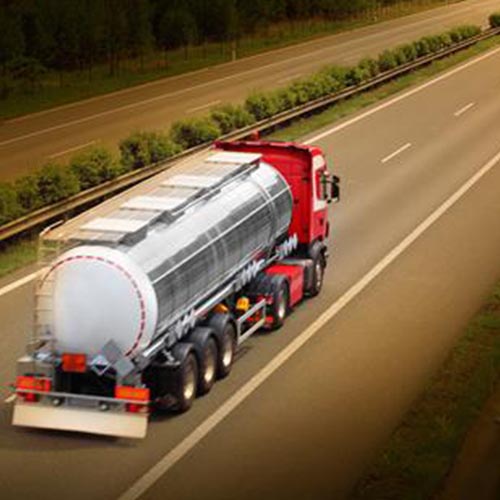
Introduction of Dangerous Goods Transport Vehicle
The Transportation of dangerous goods between China and Hong Kong, the transportation of dangerous goods is a kind of special transportation, which refers to the transportation of unconventional goods by specialized organizations or technical personnel using special vehicles. Generally, only those w ho have passed the strict review of relevant national functional departments and have corresponding facilities and equipment that can ensure the safe transportation of dangerous goods can be qualified to transport dangerous goods. Leichi Hong Kong Logistics Co., Ltd. specializes in cross-border dangerous goods and chemical transportation from the mainland to Hong Kong for many years, and has very rich experience and strong strength.
Dimensions and Load of Dangerous Goods Transport Vehicles
In the process of transportation between China and Hong Kong, the owner of the cargo should know the size and load of the vehicle before shipment, which will provide good help for shipment and effectively save transportation costs. under
The size and load capacity of the container (cabinet) carried by the China-Hong Kong trailer will be introduced in detail by the China-Hong Kong special line.
★Dimensions and load capacity of ordinary China-Hong Kong trailers:
20-foot container: the internal volume is 5.69x2.13x2.18 meters, the hand weight of the distribution is generally 17.5 tons, and the volume is 24-26 cubic meters.
40-foot container: the internal volume is 11.8x2.13x2.18 meters, the gross weight of the distribution is generally 22 tons, and the volume is 54 cubic meters.
★Dimensions and load capacity of high cabinet China-Hong Kong trailer:
40 feet high cabinet: the internal volume is 11.8x2.13x2.72 meters, the gross weight of the distribution is generally 22 tons, and the volume is 68 cubic meters
45 feet high cabinet: the internal volume is 13.58x2.34x2.71 meters, the gross weight of the distribution is generally 29 tons, and the volume is 86 cubic meters.
★Dimensions and load capacity of China-Hong Kong trailers with open top cabinets:
20-foot open-top cabinet: the internal volume is 5.89x2.32x2.31 meters, the gross weight of the distribution is 20 tons, and the volume is 31.5 cubic meters.
40 feet open top cabinet: the internal volume is 12.01x2.33x2.15 meters, the gross weight of the distribution is 30.4 tons, and the volume is 65 cubic meters.
★Dimensions and load capacity of flat bottom cabinet China-Hong Kong trailer:
20-foot flat-bottom container: the internal volume is 5.85x2.23x2.15 meters, the gross weight of the distribution is 23 tons, and the volume is 28 cubic meters.
40-foot flat-bottom container: the internal volume is 12.05x2.12x1.96 meters, the gross weight of the distribution is 36 tons, and the volume is 50 cubic meters.

Dangerous Goods Transport Vehicle Freight Inquiry
| China and Hong Kong Ton Vehicle Size | |||
| Calculated tonnage | Car size | Loadable weight | Capacity |
| 3 ton truck | 4.2*1.8*1.9 | 2000KG | 13CBM |
| 5 tons of vehicles | 4.5*2.2*2.3 | 3500KG | 20CBM |
| 8 tons of vehicles | 6.8*2*2.4 | 6000KG | 30CBM |
| 10 tons of vehicles | 7.2*2.4*2.5 | 7500KG | 36CBM |
| 12 tons of vehicles | 7.6*2.4*2.6 | 11500KG | 42CBM |
Export Transportation Process:
The following is the export transportation process, the specific operation may be different, please operate according to the actual situation.
Determine the type, weight, volume, and packing method of the goods.
Choose the mode of transportation: sea, air, railway, road, etc.
Go through customs procedures.
Choose a shipping company.
Arrange the transportation of goods.
After the goods arrive at the destination, go through customs clearance procedures.
Deliver the goods to the consignee.
Import Transportation Conditions:
Import transportation conditions refer to the conditions that the importer must meet when importing goods. These conditions include:
Goods must comply with the laws and regulations of the importing country.
Goods must be cleared by customs.
Goods are subject to customs duties and other related charges.
The goods must arrive at the destination within the stipulated time.
Importers must understand and abide by the import transportation conditions when conducting import trade, so as to ensure that the goods can be imported smoothly.
The Transportation Method from the Mainland to Hong Kong, Including:
1. Airplane: This is the fastest way of transportation, it only takes about 45 minutes from Shenzhen Baoan International Airport to Hong Kong International Airport.
2. High-speed rail: This is the most economical mode of transportation, it only takes about 1 hour and 20 minutes from Shenzhen North Station to Hong Kong West Kowloon Station.
3. Bus: This is the most convenient mode of transportation, it only takes about 1 hour from Shenzhen Luohu Port to Hong Kong Sheung Wan Station.
4. Ship: This is the most romantic mode of transportation, it only takes about 2 hours from Shenzhen Shekou Pier to Hong Kong Central Pier.
Which shipping method you choose depends largely on your personal needs and preferences. If you need to get to Hong Kong quickly, you can choose the plane. If you need cost-effective transportation, you can choose high-speed rail or buses. If you want to enjoy a boat ride, choose a boat.
Hong Kong Import and Export Transport Regulations:
The Hong Kong Import and Export Transport Ordinance (Cap. 60) is a law in Hong Kong to regulate import and export transport in Hong Kong. The regulations stipulate customs declaration procedures, customs inspection procedures, customs duties and other related fees for import and export goods.
The Ordinance applies to all goods imported or exported from Hong Kong. Before importing or exporting goods to Hong Kong, they must be declared to the customs. Customs has the right to inspect the goods and impose duties and other related fees.
The regulations also stipulate some special import and export goods, such as dangerous goods, food, medicine and animals. These goods are subject to special import and export regulations.
The Ordinance is an important law for import and export trade in Hong Kong. It guarantees the safety, order and efficiency of Hong Kong's import and export trade.